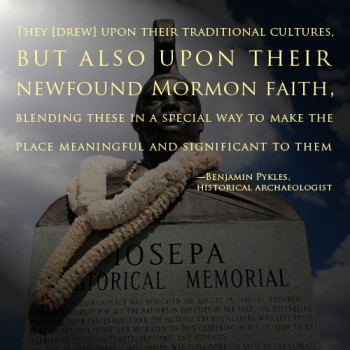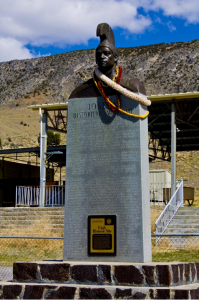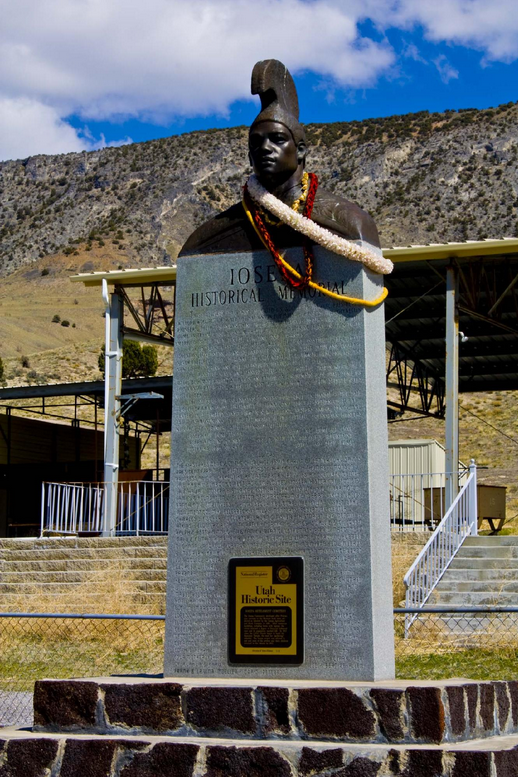by Delisa Hargrove
When most people think of Latter-day Saint or Mormon pioneers, they think of settlers from the Eastern United States or immigrants from Europe. However, other members of The Church of Jesus Christ of Latter-day Saints (often inadvertently called the Mormon Church) left their homelands to follow the Lord and His prophet as well. Polynesians responded to the prophet’s call to gather to Zion in the late 1800’s.
Mormon Missionary Serving in Hawaii
 Brigham Young, then president of the Church, called my great, great uncle John Anderson West to leave Parowan, Utah, to preach the gospel in the Hawaiian islands in the late 1850’s and again 14 years later. In his journal, John recorded his initial difficulty in communicating with the islanders. With divine help, he slowly learned Hawaiian. He loved the humble, hospitable people. During his first mission, missionary work progressed slowly. When he returned again in 1870, many locals converted to Mormonism.
Brigham Young, then president of the Church, called my great, great uncle John Anderson West to leave Parowan, Utah, to preach the gospel in the Hawaiian islands in the late 1850’s and again 14 years later. In his journal, John recorded his initial difficulty in communicating with the islanders. With divine help, he slowly learned Hawaiian. He loved the humble, hospitable people. During his first mission, missionary work progressed slowly. When he returned again in 1870, many locals converted to Mormonism.
One convert gave John a horse to use while he traversed the vast Big Island. John recorded how a recent volcanic eruption had totally wiped out villages where he had once taught the gospel and he mourned the loss of friends who perished. The converts were faithful and endured great hardship as they converted to Christianity.
Pacific Islander Emigration to Utah
Converts left the Pacific Islands and emigrated to Utah. The leaders of the Church found a place in Utah’s Skull Valley, about 75 miles southwest of Salt Lake City, for the Pacific Islanders to settle. They named the settlement Iosepa (Yo-see-pa) honoring President Joseph F. Smith who was one of the first missionaries to the Hawaiian Islands, and the Prophet Joseph Smith. Though many parts of the Pacific Island’s leeward shores are desert-like, the Islanders had never experienced jarring winters which compromised the settlers’ health. Outbreaks of smallpox, diphtheria, pneumonia, and leprosy took a heavy toll. The emigrants creatively tried to adapt their traditional food to Utah food options, even substituting flour and cornstarch for poi. They tried to grow seaweed, as well as other more traditional mainland crops. However, crop failures forced many men to seek work as gold and silver miners. They created Kanaka Lake, a small reservoir, for swimming and recreational activities. Iosepa’s grid pattern streets were lined with yellow roses.
Richard Poulsens’ A History of Iosepa, Utah, reminisced that
The Polynesians were especially proud of their luaus, where they dressed in traditional costumes and performed the songs and dances of the islands along with their Gosh Ute Indian neighbors from the adjoining Reservation. On these occasions large feasts were prepared consisting of pigs and sheep cooked in an imu (underground oven), along with the making of laulau by wrapping carp (raised in their reservoir) inside corn husks. The traditional island poi was replaced with a substitute concoction that used cornstarch and flour.
In 1911, Utah historian J. Cecil Alter wrote,
Iosepa is perhaps the most successful individual colonization proposition that has been attempted by the Mormon people in the United States… There are 1,120 acres practically all in use and half as much more is being brought under the magic wand of the Hawaiian irrigator.
The Salt Lake Tribune reported, “As many as 200 [residents] lived [in Iosepa] from 1889 until 1917. Many then returned to their homeland, drawn by the LDS temple going up in Laie, Hawaii.” Iosepa was deserted in 1917.
Remembering Iosepa’s Polynesian Mormon Pioneers
 Vermin Hawes, a descendant of Iosepa settlers, coordinated a Memorial Day event in 1980 at Iosepa to repair and beautify the area. Polynesians now gather annually on Memorial Day at Iosepa for a three-day festival celebrating the pioneers’ history with memorial services, games, and a luau.
Vermin Hawes, a descendant of Iosepa settlers, coordinated a Memorial Day event in 1980 at Iosepa to repair and beautify the area. Polynesians now gather annually on Memorial Day at Iosepa for a three-day festival celebrating the pioneers’ history with memorial services, games, and a luau.
Late LDS President Gordon B. Hinckley dedicated a bronze bust Polynesian warrior monument to the memory of the settlers of Iosepa on August, 28, 1989.
Visitors continue to pay tribute to the Polynesian converts’ memories in Iosepa. Celebrating Utah’s 2013 Pioneer Day at Iosepa, Jacob Fitisemanu from Taylorsville, Utah, imagined being part of the original settlement and reflected,
There is a spiritual connection whenever we come here. We try to be reverent when we come here. We understand it.
They made it work. They were very spiritual people who managed to survive. They brought water to town from the top of the mountain four or five miles away for an irrigation system. They were an industrial people.
The converts of Iosepa settled their portion of Utah’s barren wilderness to be closer to the Salt Lake City Temple so they could participate in sacred Mormon temple rituals. The courage born of their faith enabled them to overcome the challenges of bitter winters and unusual food and culture. When a temple was built in the Hawaiian Islands, they returned to worship and build up the Church in Hawaii.
Having lived in Hawaii, I know that the Polynesians’ incredible faith in Jesus Christ and His Church continues today. They diligently spread the Savior’s love and aloha to others through food, friendship, and a constant invitation to learn of and worship the Savior in His holy temples throughout the Pacific Islands.


 Watch a video about the restoration of the gospel on lds.org
Watch a video about the restoration of the gospel on lds.org